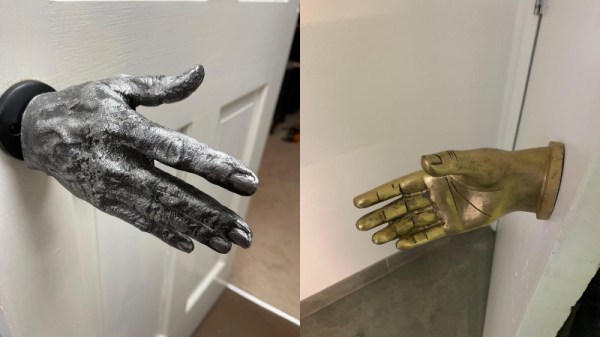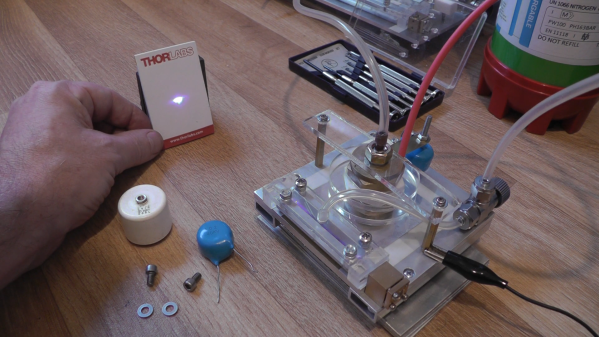Regular doorknobs are widely reviled for their bare simplicity, but by and large society has so many other problems that it never really comes up in day to day conversation. Fear not, however, for [Matthew] has created something altogether more special: a doorknob in the shape of his own outstretched hand.
The build was inspired by a similar doorknob at the WNDR museum in Chicago, and its one you can recreate yourself, too. It’s achieved through a multi-stage mold making process. [Matthew]’s first step was to make a flexible mold of his hand using Perfect Mold alginate material to do so.
Once solidified, [Matthew’s] hand was removed and the mold filled with wax. The wax duplicate of [Matthew]’s hand was then used to create an investment plaster mold for casting metal. Vents were added in the end of each fingertip in the mold to allow molten metal to effectively fill the entire cavity.
Once the investment mold was solid and dry, the wax was melted out and it was ready for casting. A propane furnace was used to melt the casting metal and fill the mold using a simple gravity casting method. [Matthew] ended up making two hands, one in aluminium and one in copper. Some cleanup with grinders and a wire wheel, and a replica of [Matthew]’s hand was in his hands!
The finished piece looks great attached to a door knob, and we’re sure it’s quite satisfying shaking hands with your hefty metal self every time you open the door. It bears noting that the same techniques can be used with 3D printing, too! If you pull off your own great home casting project, be sure to drop us a line. Video after the break.














